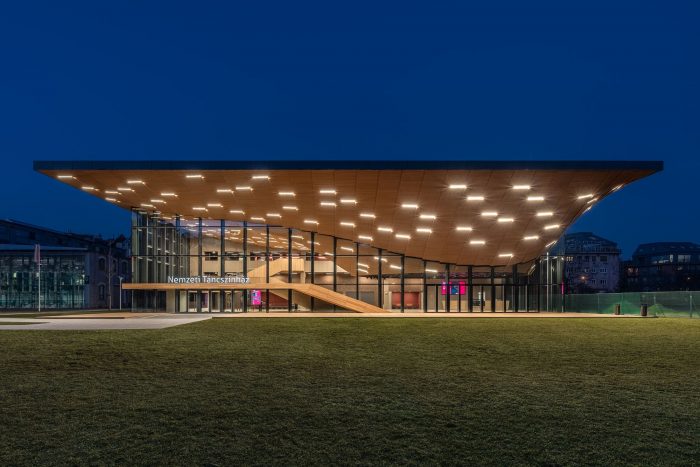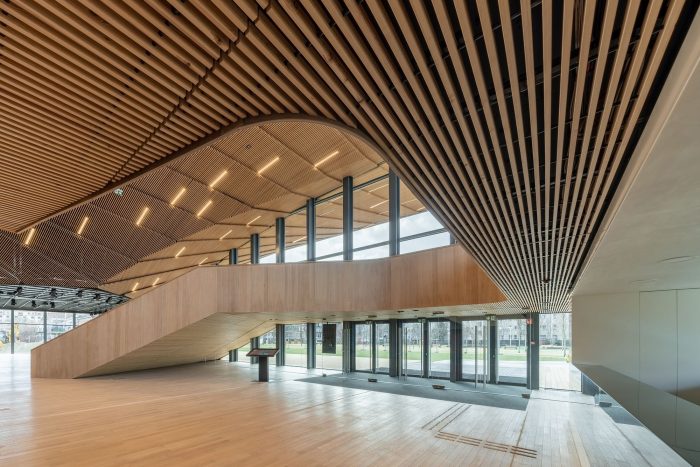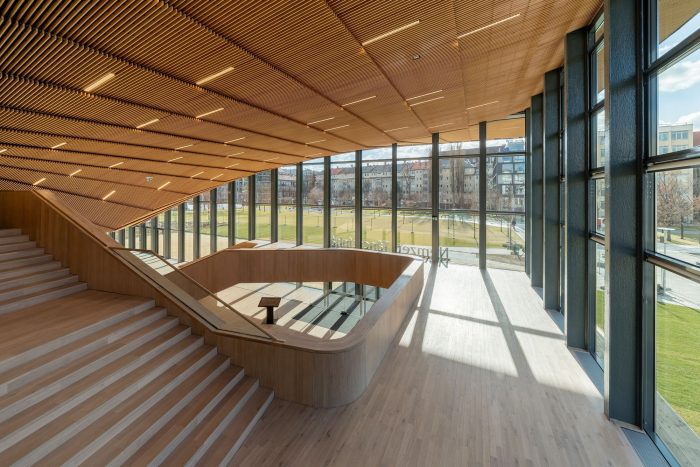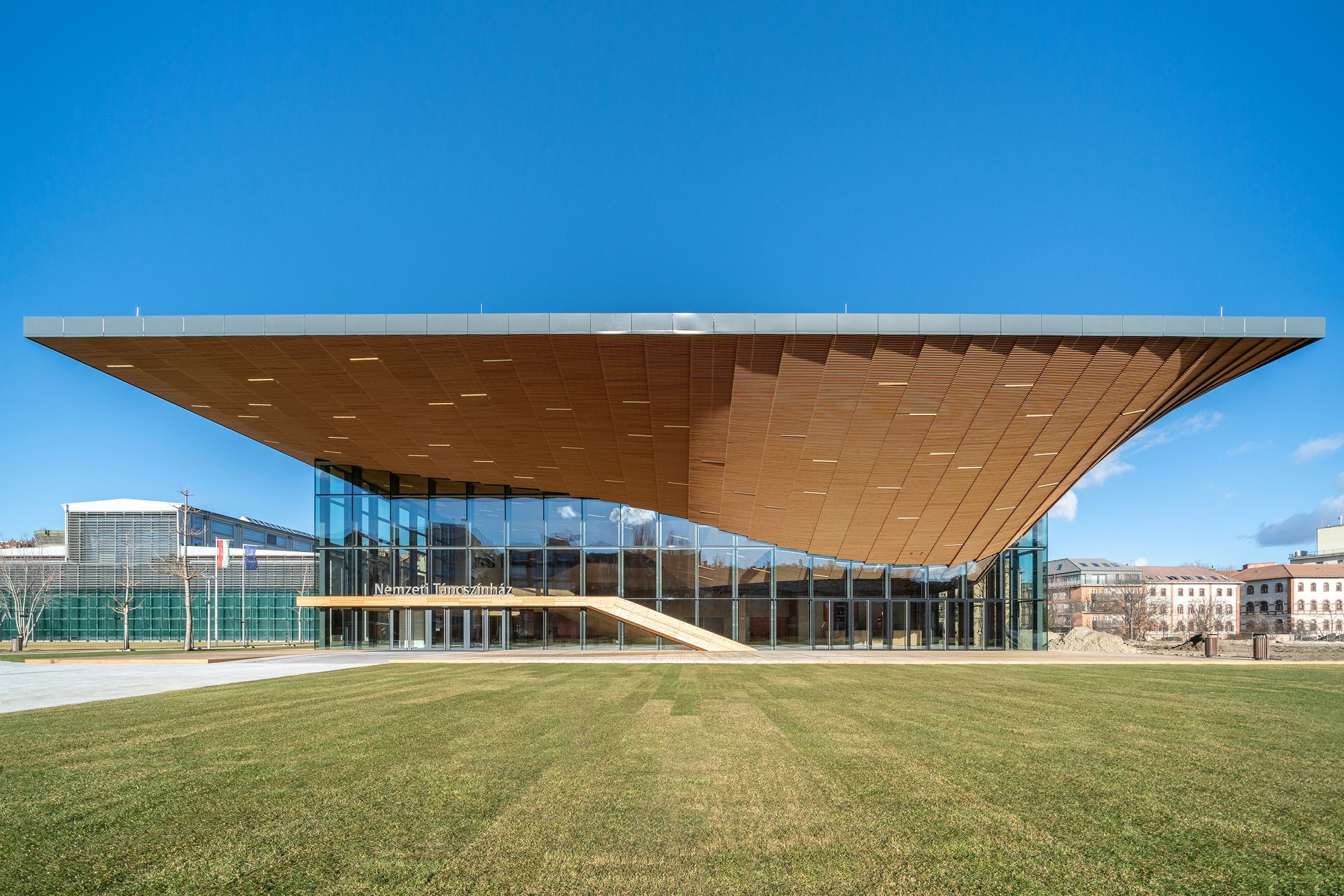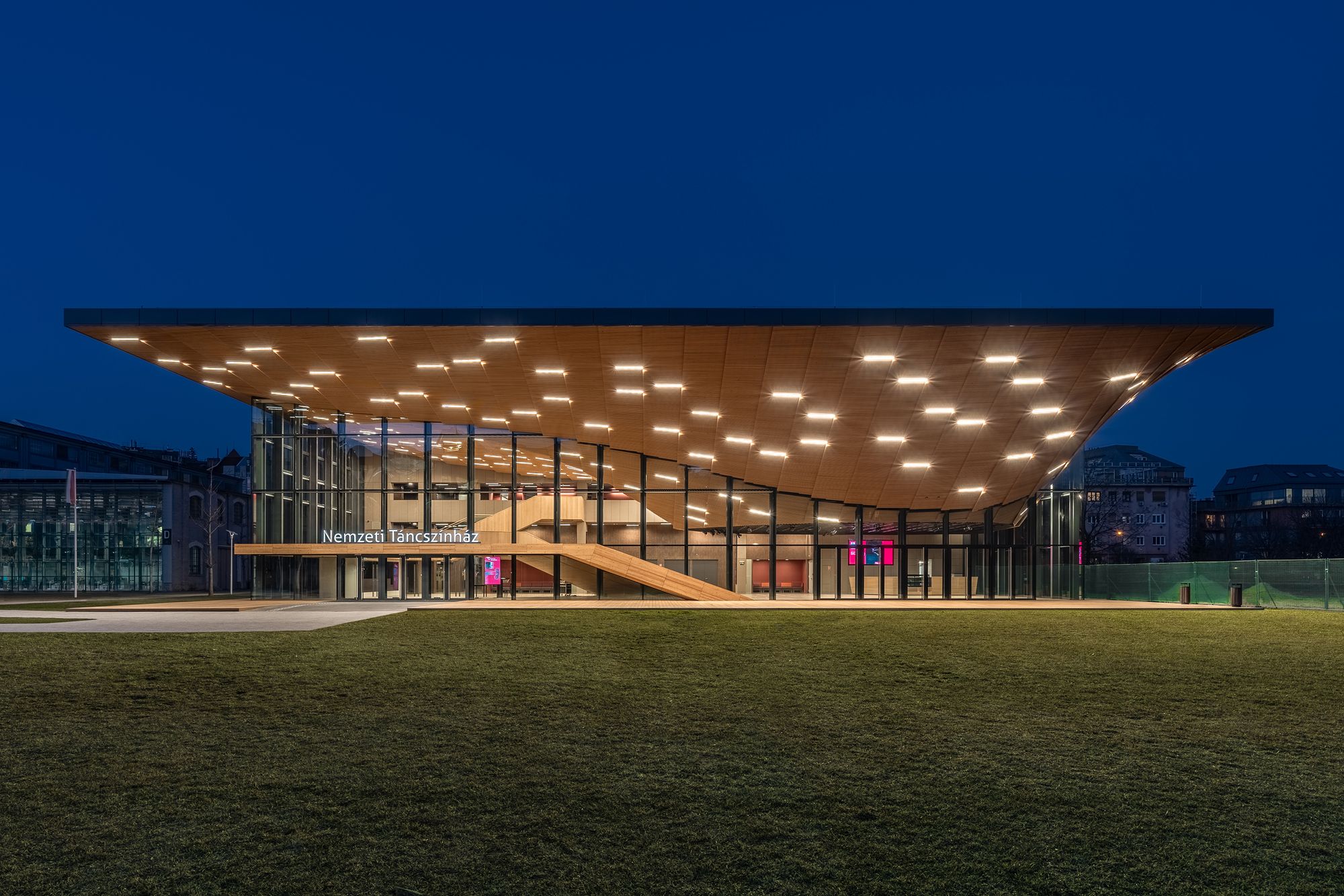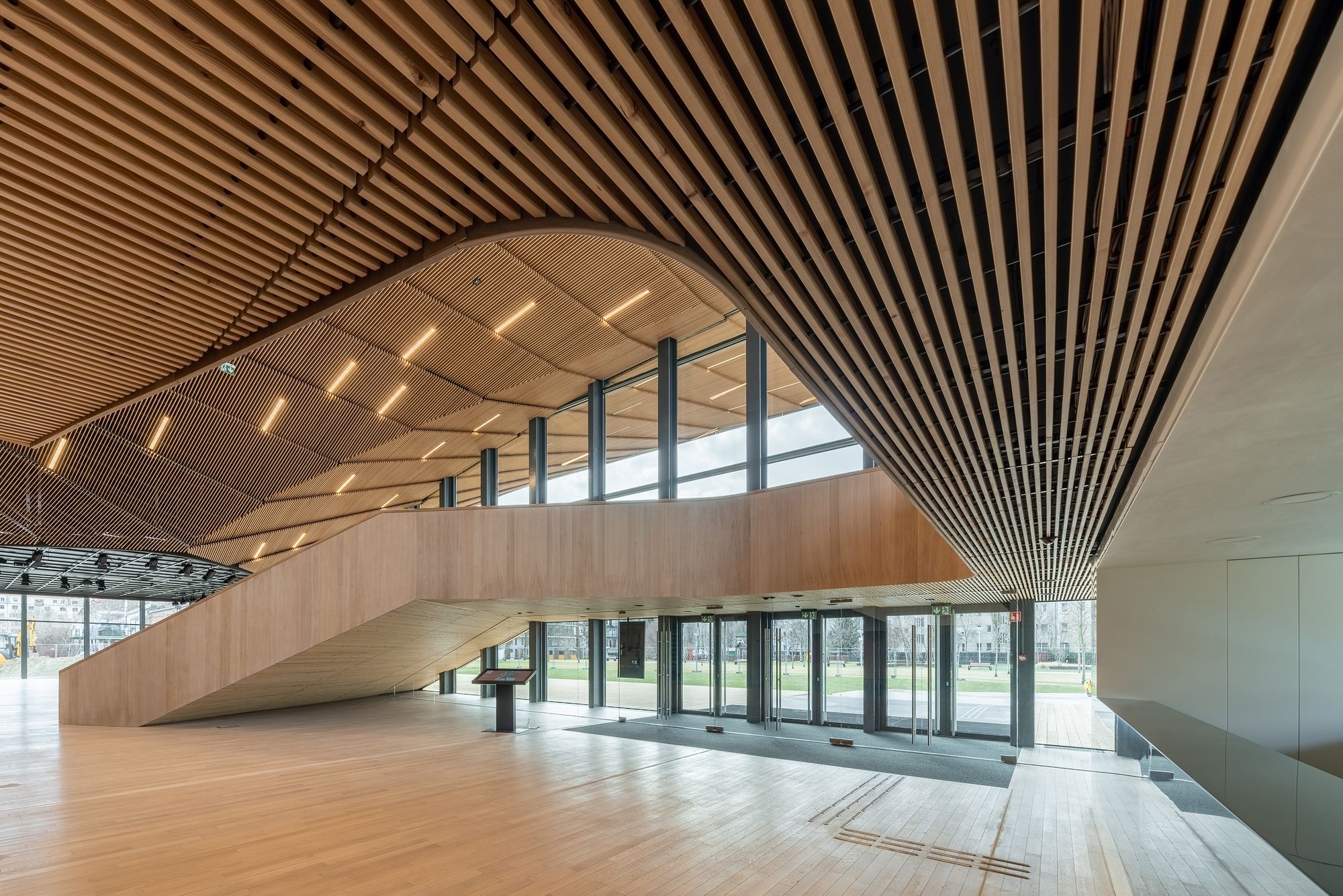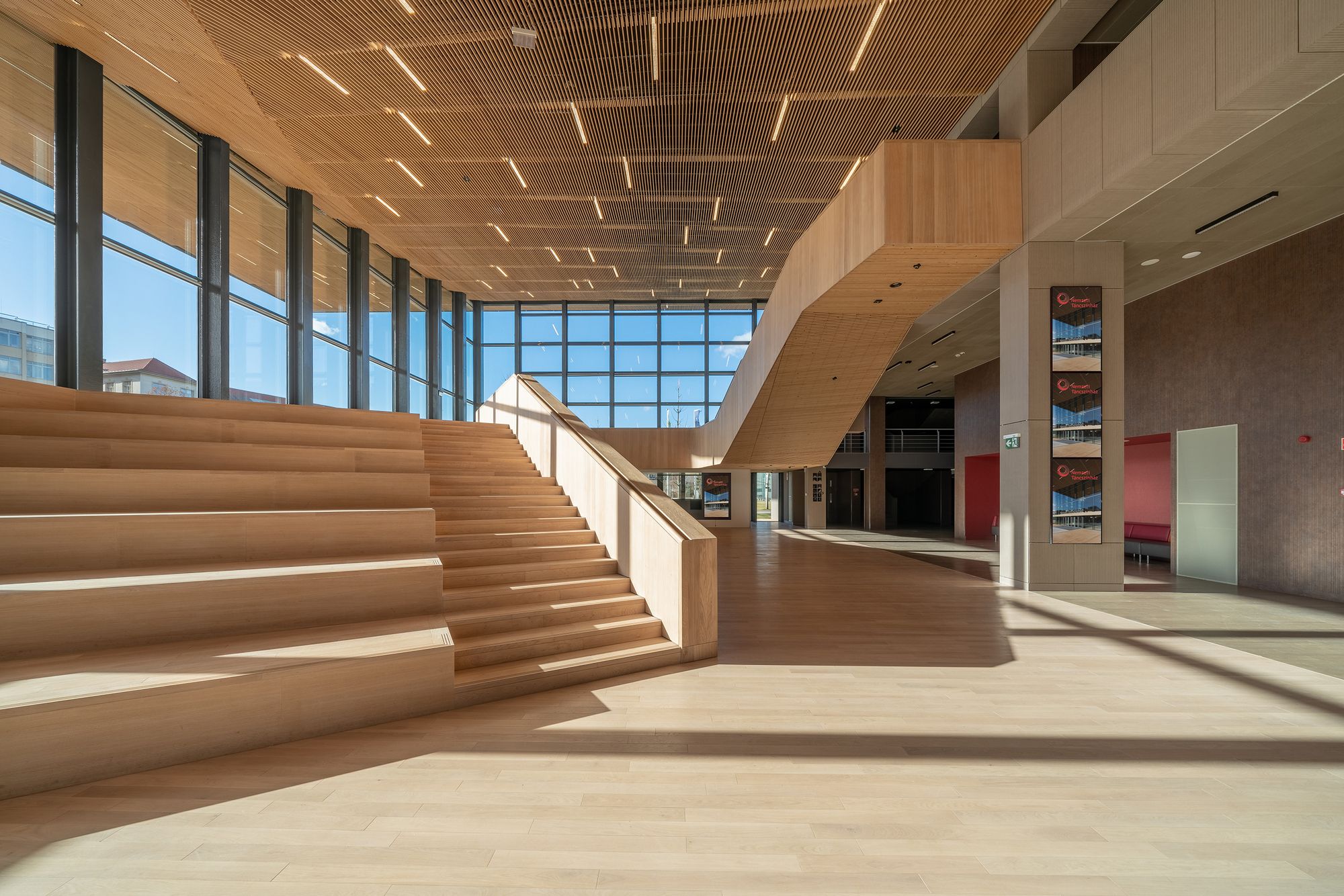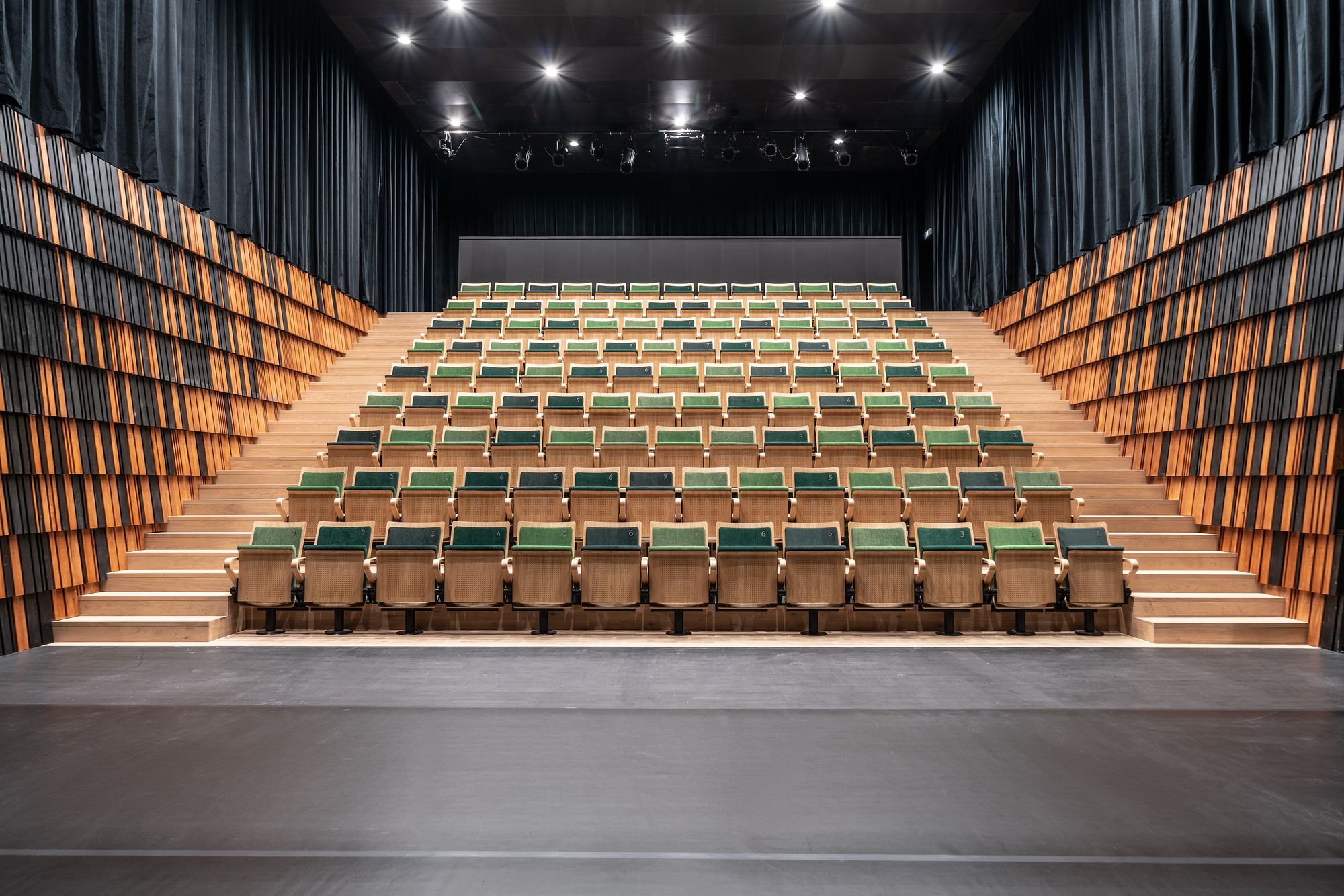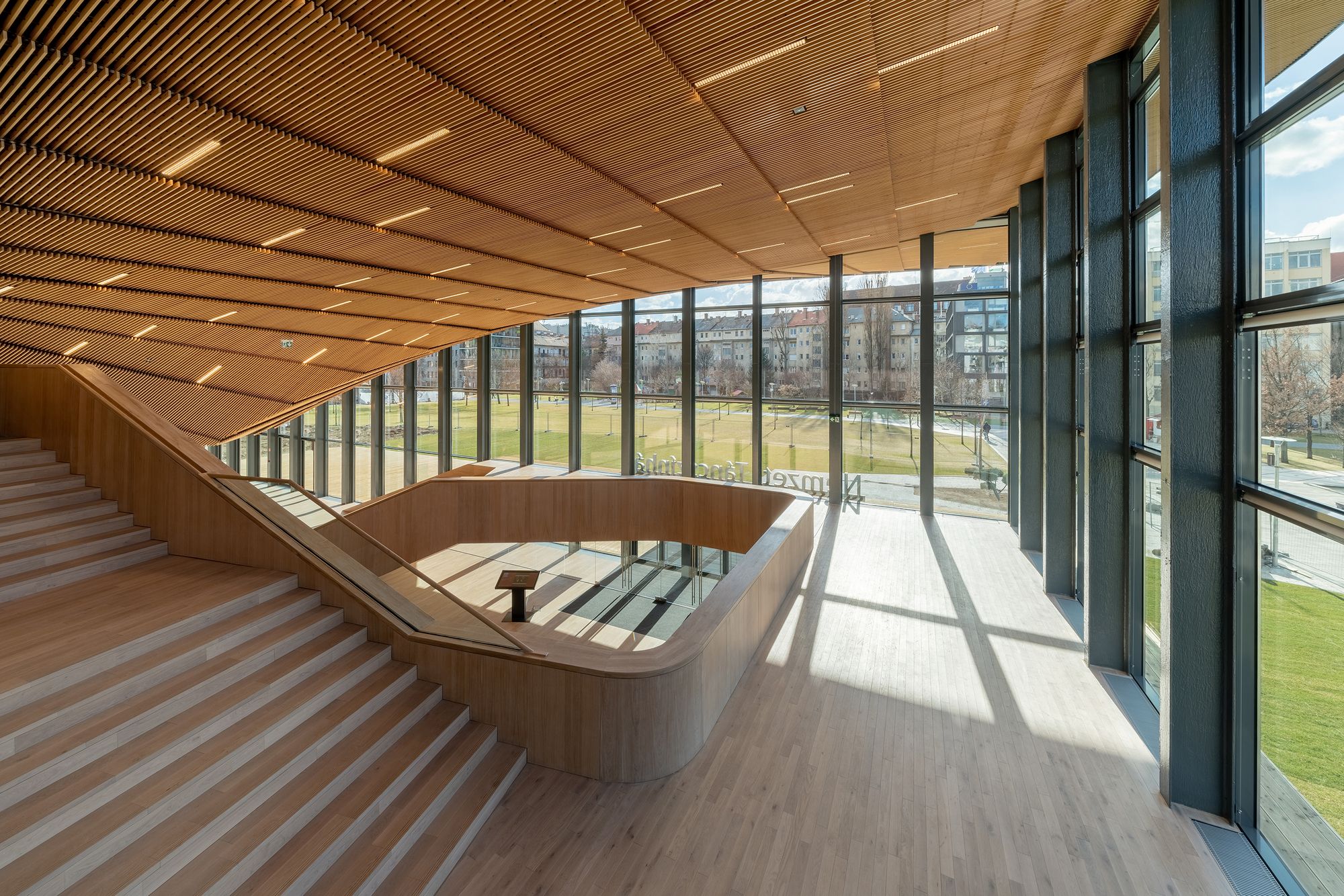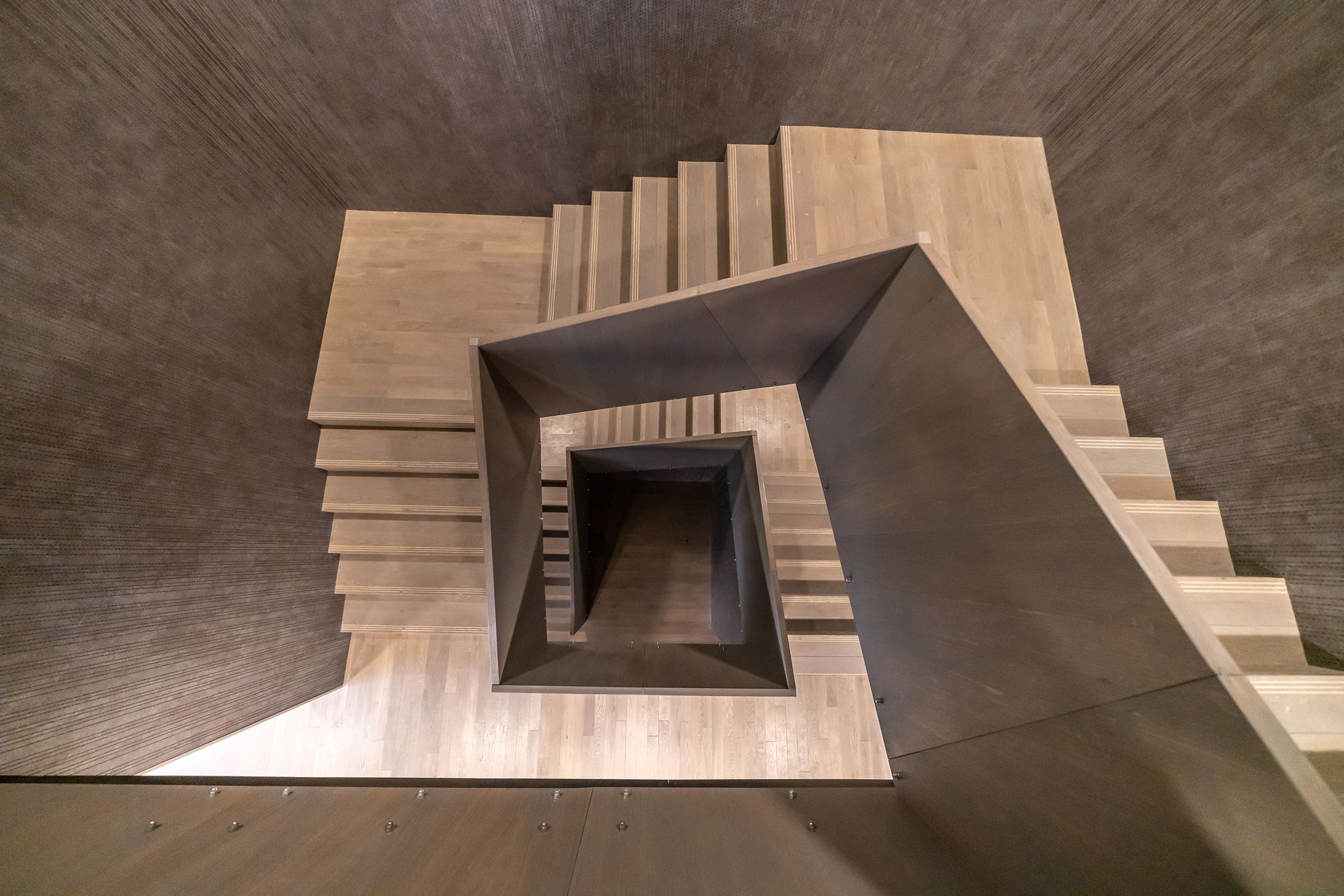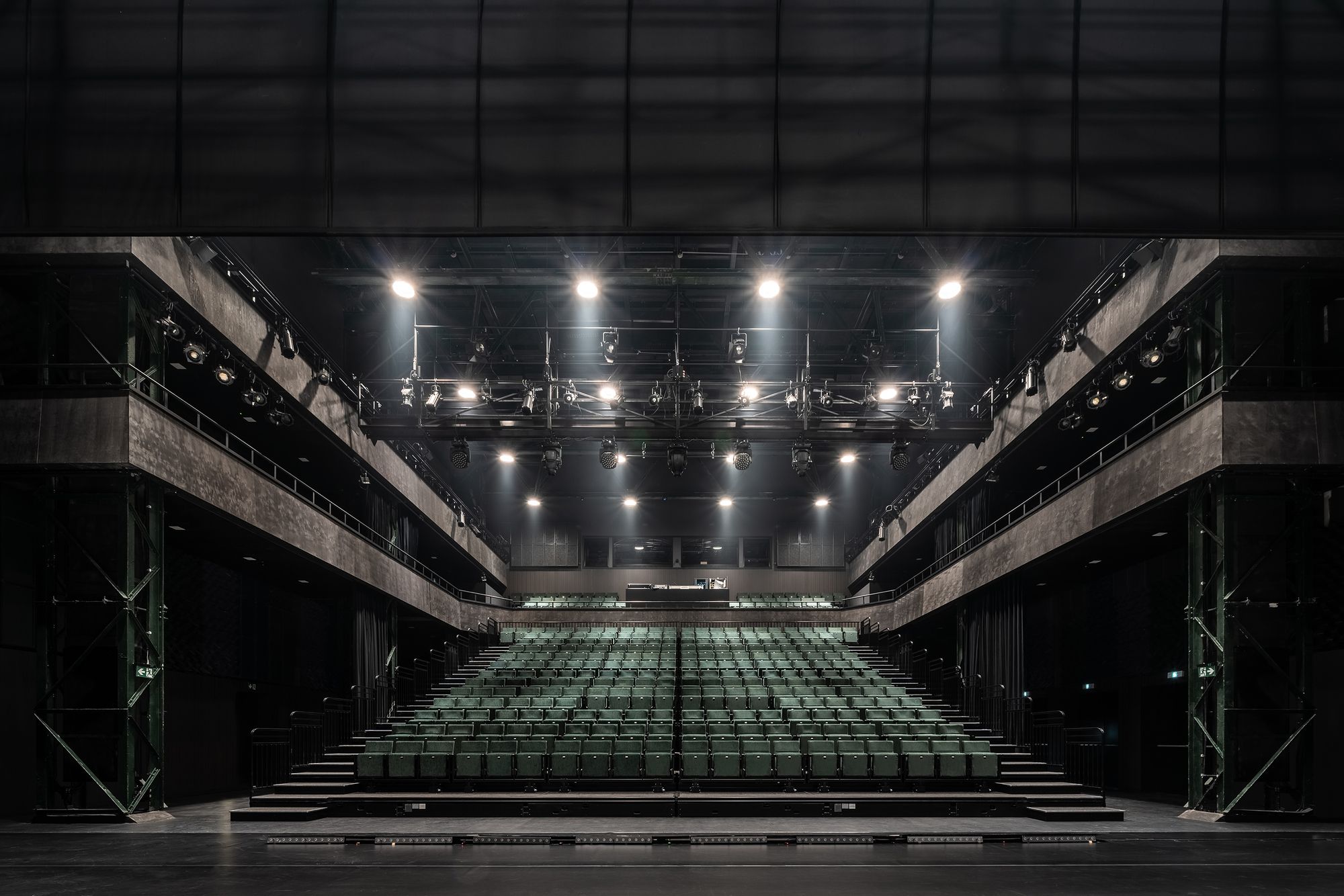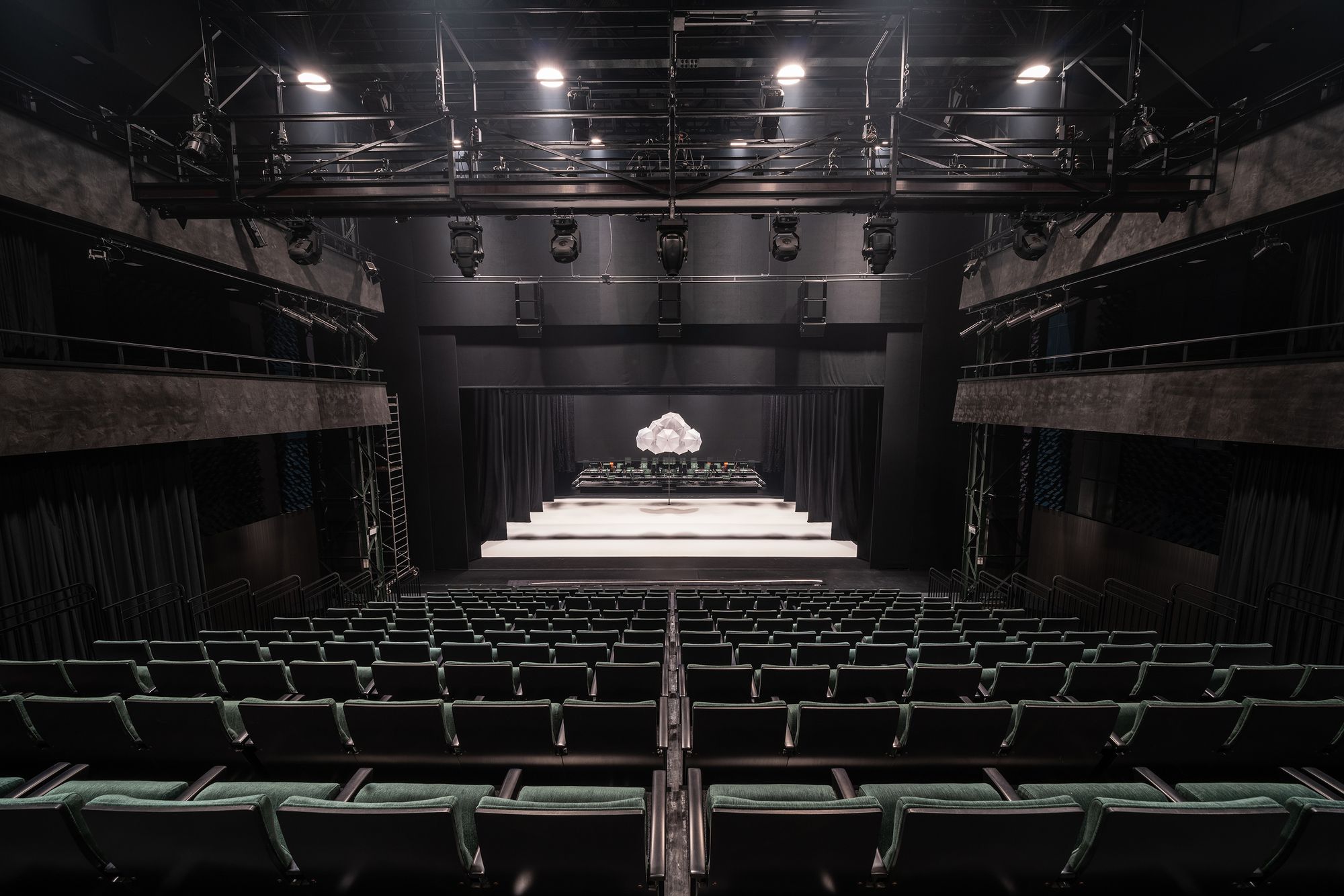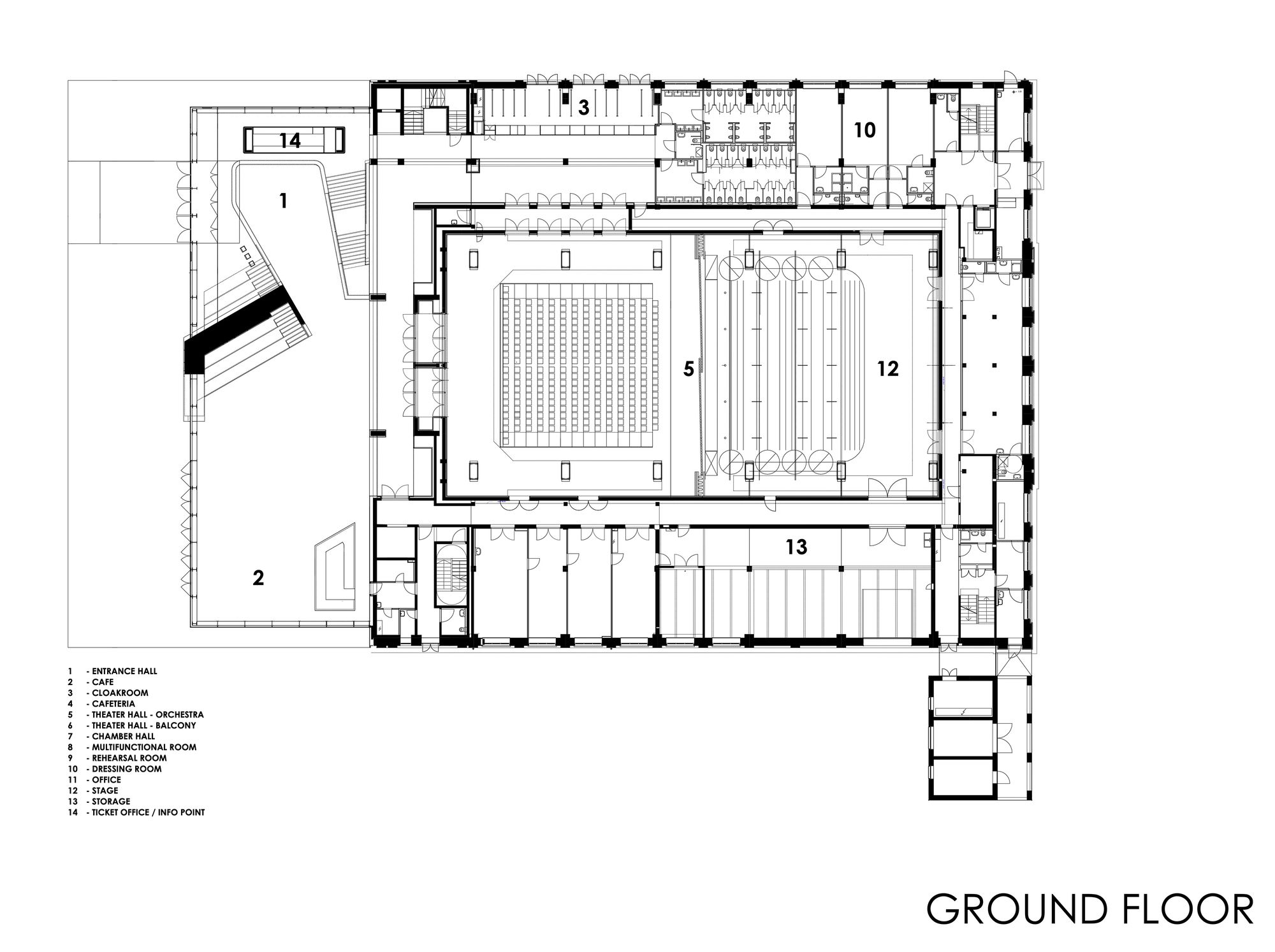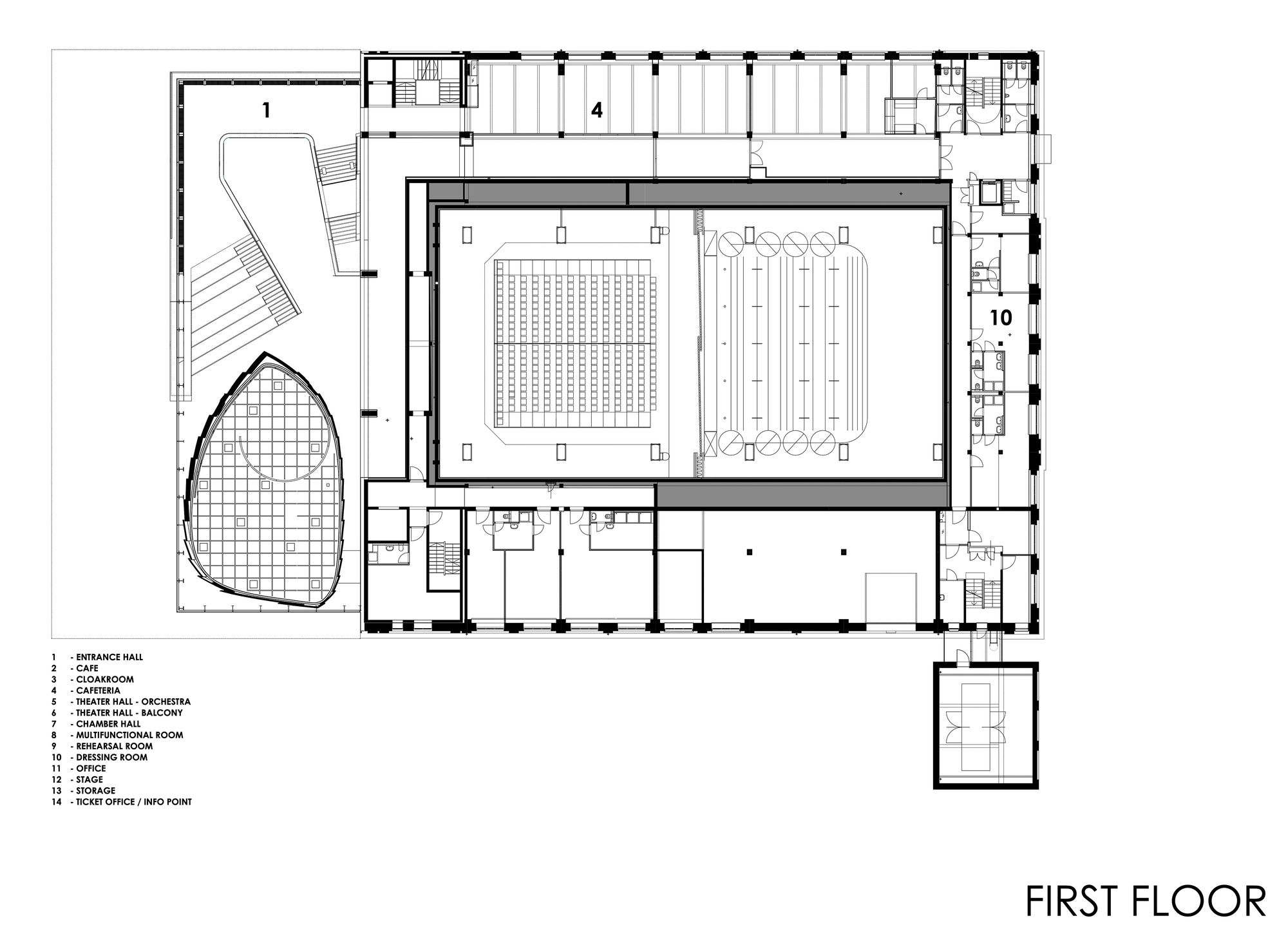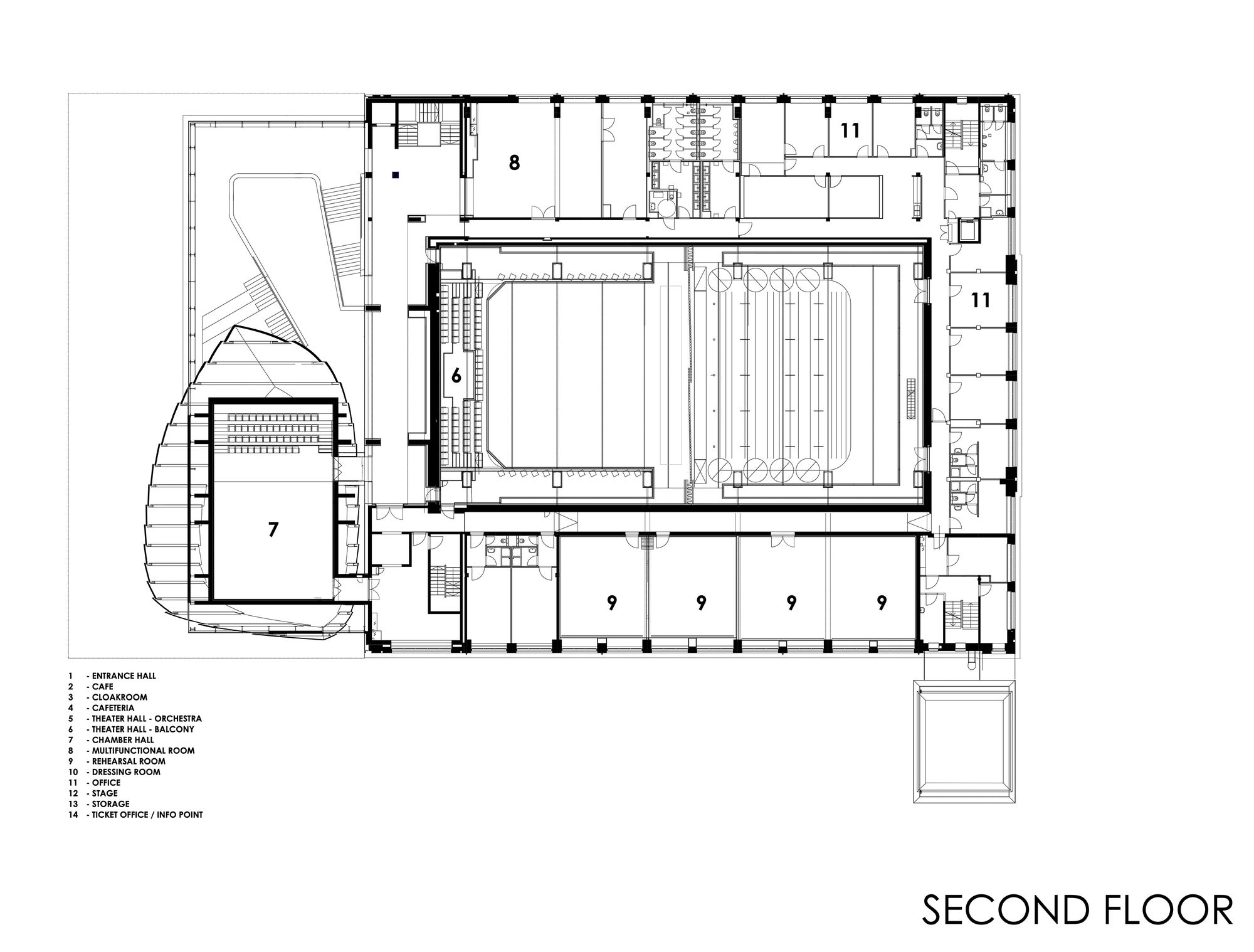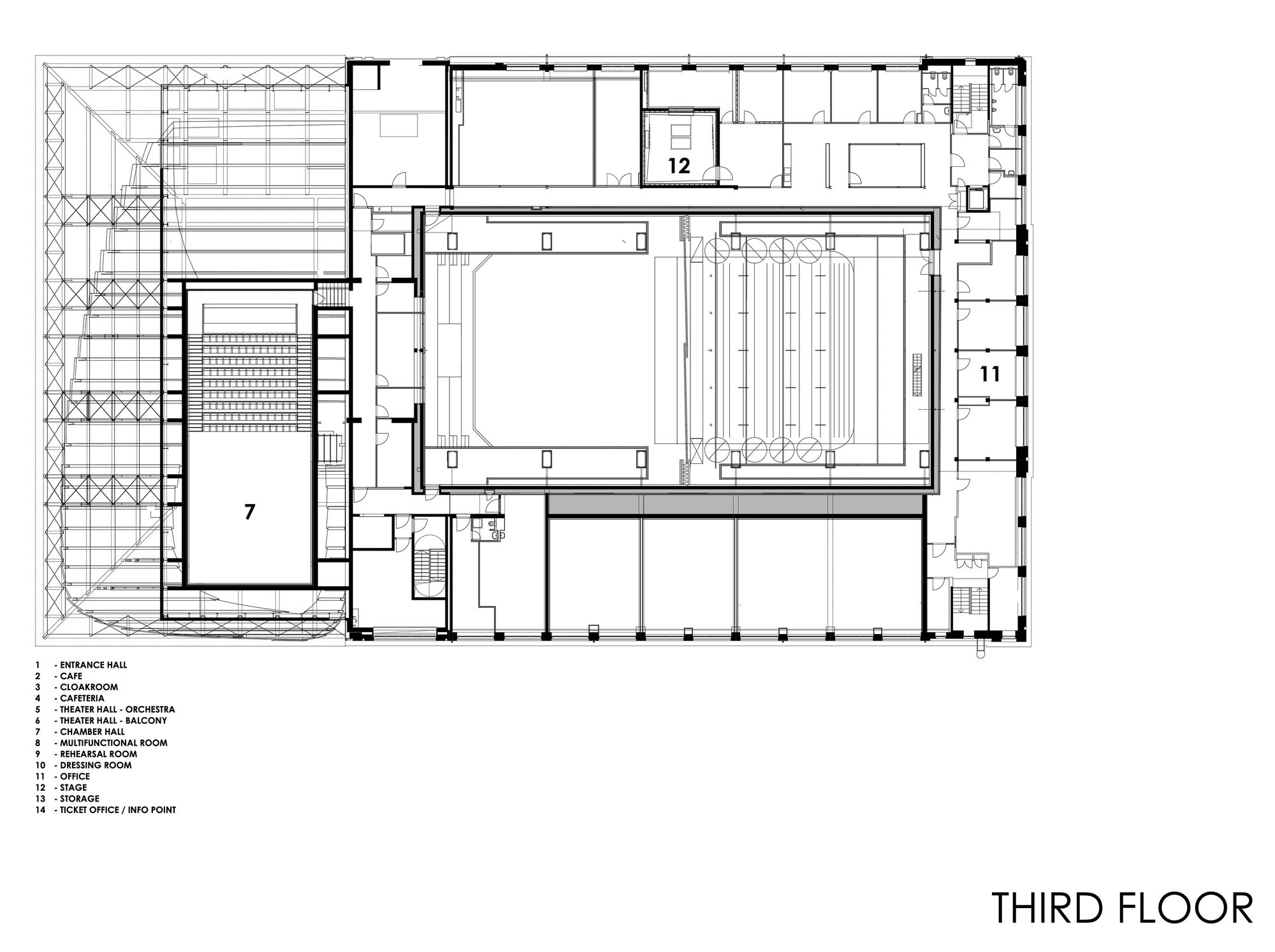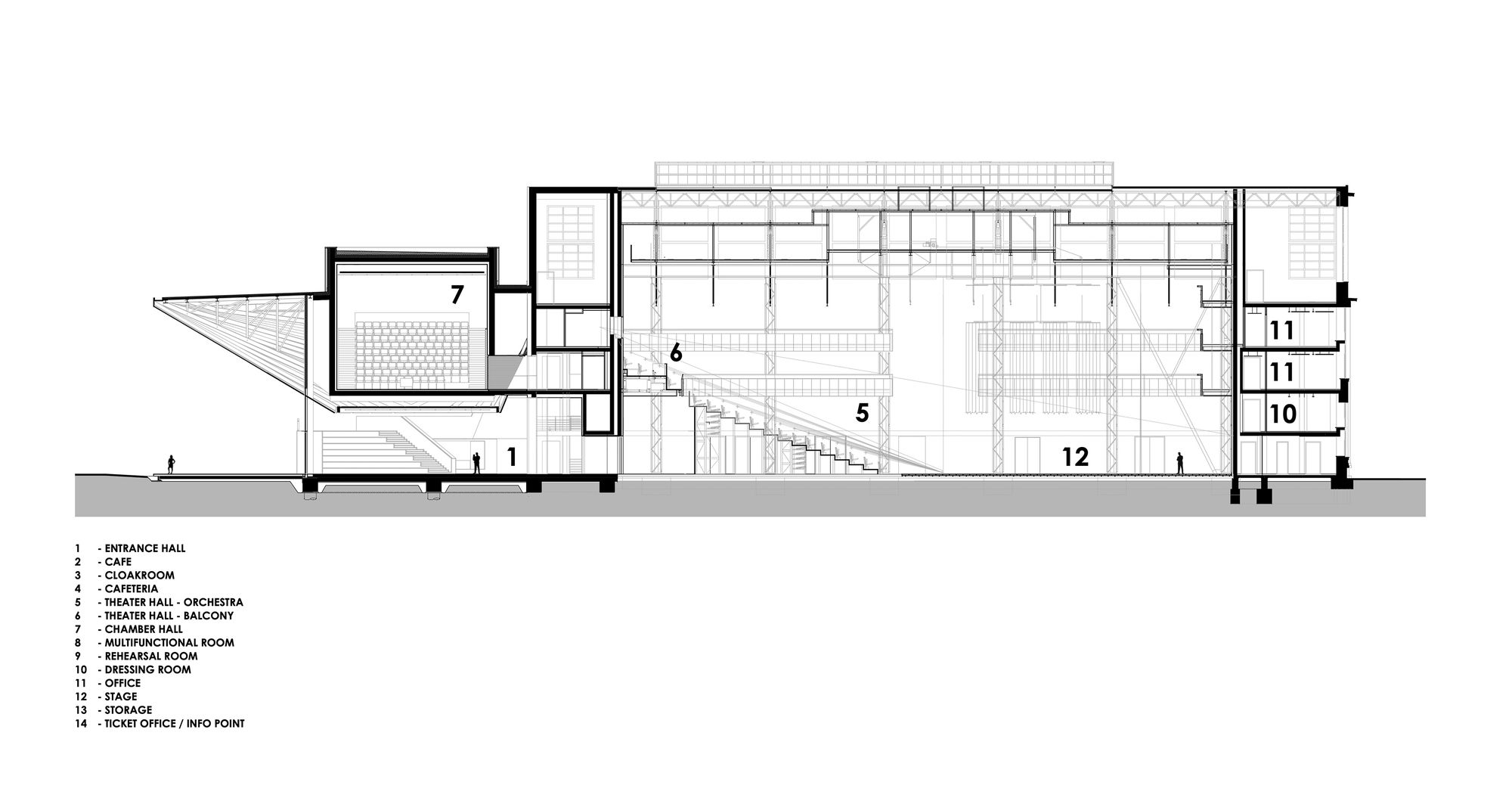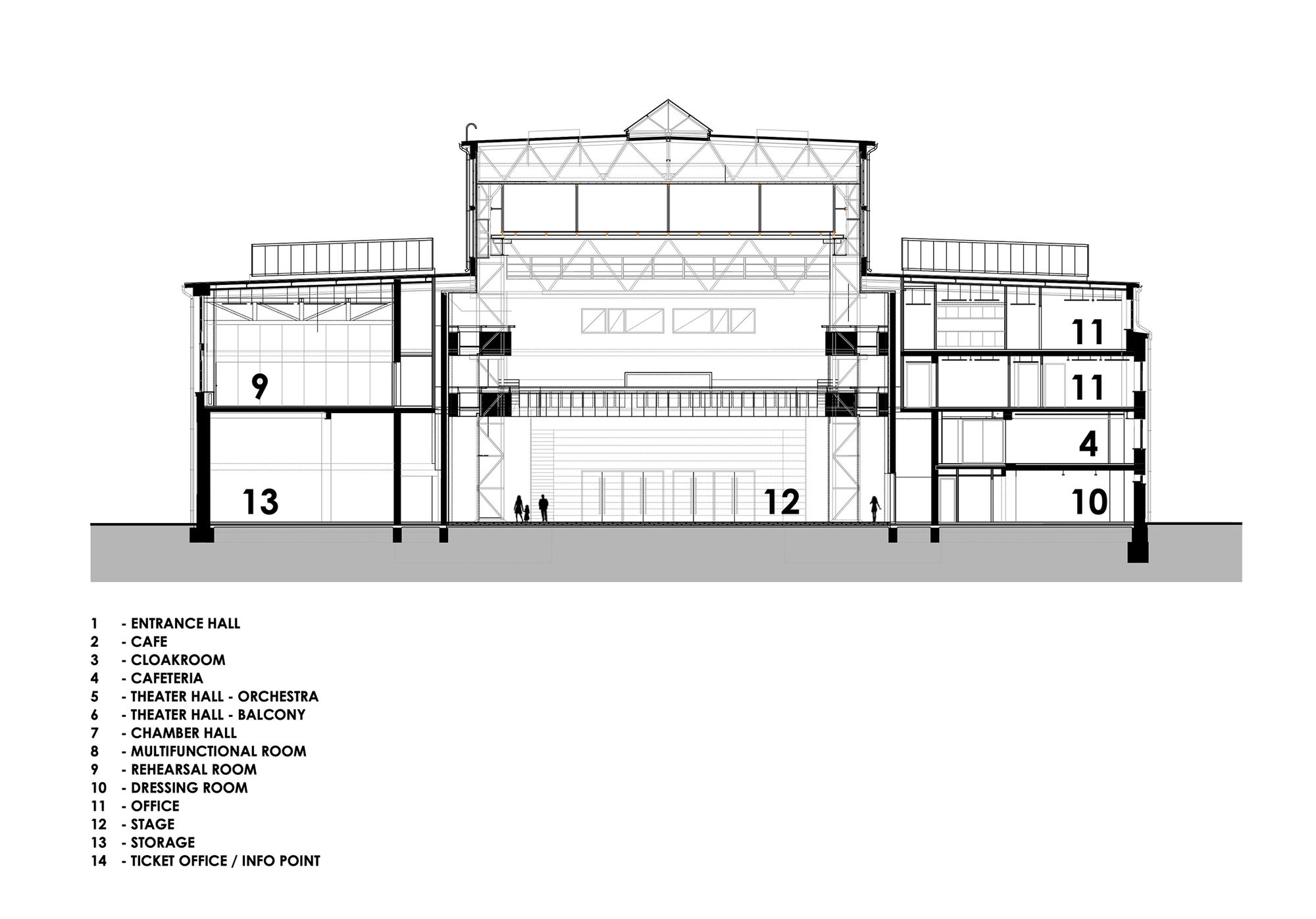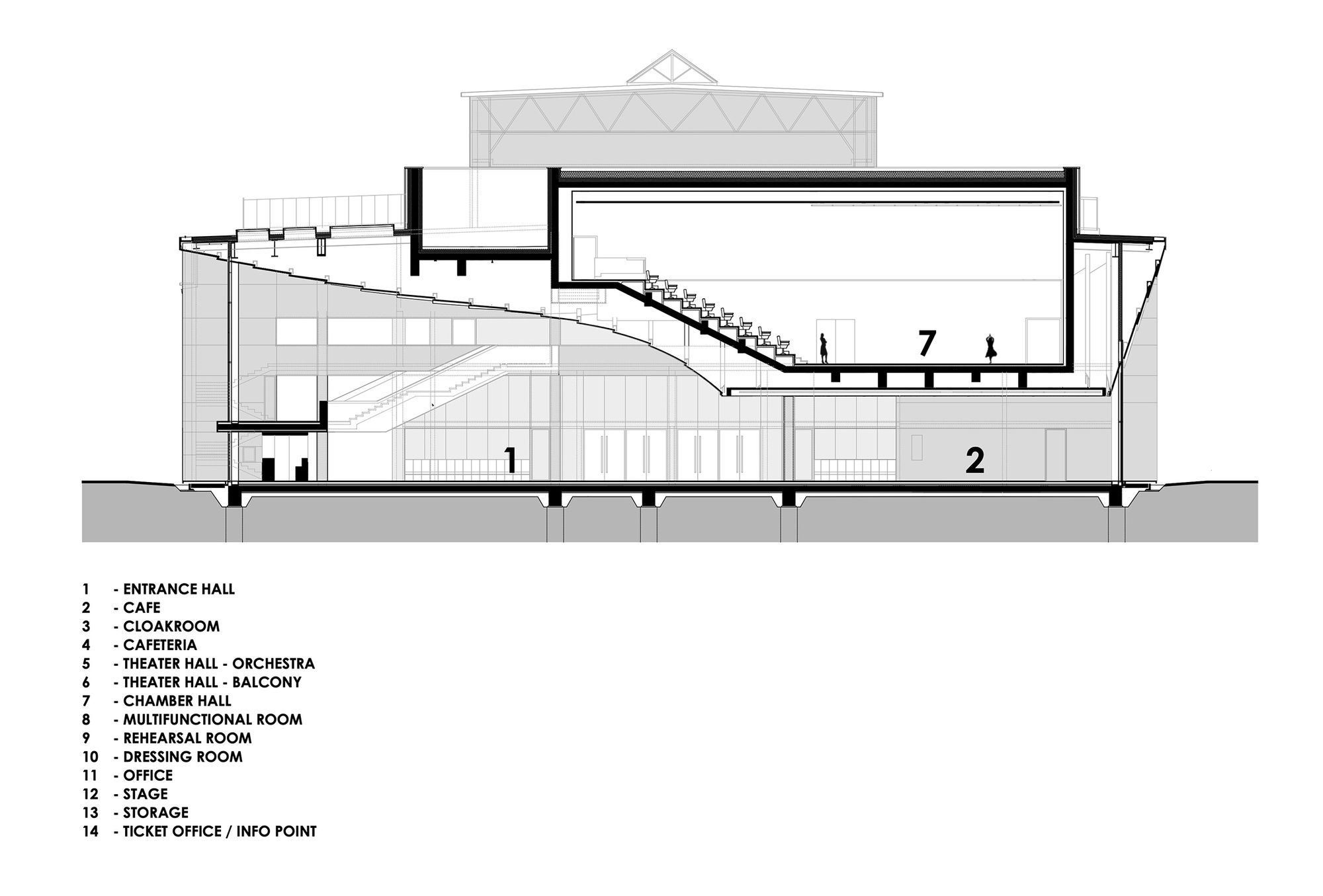National Dance Theater
In an old industrial building that was once a flourishing hub for world-famous inventions, Hungarian dance has found a new home. The former Ganz factory, which had its heyday at the end of the 19th century, was not just a symbol of Hungarian industry, but also a cradle for a generation of Hungarian scientists who lent extraordinary creative impetus to the world. The factory hall, now home to the National Dance Theatre, hosted the creative endeavours of internationally renowned engineers and scientists, and several defining inventions such as the transformer and the dynamo were conceived there. The new building is thus a forum where science and culture meet, where experimental genres, folk dance, contemporary dance, as well as classical ballet, are all given a stage. At the same time, the building is not only a cultural and artistic space, but also a meeting point in one of Budapest’s regenerated parks.
Past and future, spirit and creativity – in one place. The previous home of the National Dance Theatre was a monastery converted into a theatre that provided limited technical possibilities for presenting a broad repertoire of dance genres. The site chosen for the new building was an industrial hall in one of the capital’s parks, which in the 19th century was one of the buildings of the Ganz factory. The factory was closed during the change of regime, then transformed into a public park, and the industrial buildings were converted into exhibition and studio spaces.
Cultural and community space, in an industrial listed building. When designing the new theatre building, the architects had a dual objective: to emphasise the virtues of the existing industrial building, and to transform the space to meet the diverse current and future needs of the dance profession. A new wing and facade was added to the previously closed-off industrial hall, which connects it to the park, open and inviting. The see-through lobby is part of both the park and the theatre: it serves not only to receive visitors but is also a vibrant community and cultural space where art, human interaction and recreation are present simultaneously.
The industrial hall can be thought of as a three-nave cathedral, the central element of which is a large hall for 368 people converted into a multifunctional theatre space. The stage area, equipped with modern theatre technology, can be adapted to the broad repertoire of the dance profession, to its current and future needs, but other events such as concerts and gala dinners can also be held in it. The detachable, mobile chair system of the auditorium, which can be moved to the side if necessary, also serves this purpose.
The small hall suspended over the lobby is a space for experimentation, which also functions as a theatre for staging a variety of genres. By moving the mobile curtain system, the acoustic environment can also be changed, making the sound of the room sharper or duller. A sound studio has also been set up in the building to expand the artistic potential of the dance productions, and there are also two large rehearsal rooms in the dance theatre.
Project Info:
Architects: ZDA – Zoboki Design and Architecture
Location: Budapest, Hungary
Area: 8000 m²
Project Year: 2019
Photographs: Zsolt Hlinka
Manufacturers: AutoDesk, EQUITONE, Bosch RexRoth, Graphisoft, Milliken, MátraParkett, Robert McNeel & Associates, Schuco, Stuhlwerk
by: sara hamdy
photography by © Zsolt Hlinka
photography by © Zsolt Hlinka
photography by © Zsolt Hlinka
photography by © Zsolt Hlinka
photography by © Zsolt Hlinka
photography by © Zsolt Hlinka
photography by © Zsolt Hlinka
photography by © Zsolt Hlinka
photography by © Zsolt Hlinka
Ground Floor Plan
First Floor Plan
Second Floor Plan
Third Floor Plan
Section
Section
Section


